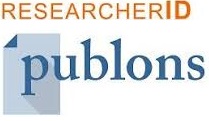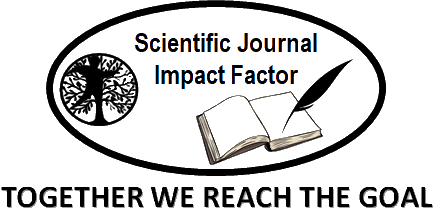Hospital Service Effectiveness: Leadership Style, Organizational Culture, and Organizational Commitment
Abstract
This study aims to analyze the influence of leadership style, organizational culture and organizational commitment on service effectiveness at Jakarta Port Hospital (JPH). This study uses quantitative approach with multiple linear regression analysis techniques. The independent variables in this study are leadership style (X1), organizational culture (X2), and organizational commitment (X3), while the dependent variable is service effectiveness (Y). The results of analysis show that leadership style variable partially has positive and significant effect on service effectiveness (36.5%). The organizational culture variable also has a positive and significant effect of 35.6%, while organizational commitment variable only has an effect of 9.5% and is not significant. Simultaneously, the three variables have a significant effect on service effectiveness with an F-count value of 61.202, greater than F-table 2.76, and a significance value of 0.000. The magnitude of the contribution of the three independent variables to service effectiveness is shown through the Adjusted R Square value of 0.751 or 75.1%, while remaining 24.9% is influenced by other variables not examined in this research. This research concludes that leadership style and organizational culture are dominant factors that influence service effectiveness, while organizational commitment partially provides positive and insignificant contribution. Therefore, increasing service effectiveness at RSPJ should be focused on strengthening leadership and improving organizational culture, including how to implement more appropriate and effective strategies in building organizational commitment.
Keywords—leadership style; organizational culture; organizational commitment; hospital service effectiveness
Keywords
Full Text:
PDFReferences
H. Madiistriyatno and A. Setiawan, “Peningkatan Kinerja Bidang Kesehatan, Motivasi dan Pelayanan Prima,” Syntax Idea, vol. 3, no. 4, pp. 779–788, Apr. 2021, doi: 10.46799/syntax-idea.v3i4.1107.
Q. M. Islam, “Innovation in Primary Healthcare in the Twenty-first Century,” Journal of Health Management, vol. 23, no. 1, pp. 129–142, Mar. 2021, doi: 10.1177/0972063421994987.
C. Miraldo, S. F. Monken, L. Motta, and A. F. Ribeiro, “Innovation in Health-care Companies: a Strategy to Increase Customer Service Productivity,” Innovation & Management Review, vol. 16, no. 4, pp. 357–374, Sep. 2019, doi: 10.1108/INMR-04-2019-0041.
R. P. A. Abdillah, H. Nabilah, and R. Wasir, “Teknologi dan Inovasi dalam Manajemen SDM Kesehatan: Meningkatkan Efisiensi melalui Digital,” Indonesian Journal of Health Science, vol. 4, no. 6s, Art. no. 6s, Nov. 2024, doi: 10.54957/ijhs.v4i6s.1226.
G. Gebreheat, H. Teame, and E. I. Costa, “The Impact of Transformational Leadership Style on Nurses’ Job Satisfaction: An Integrative Review,” SAGE Open Nursing, vol. 9, p. 23779608231197428, Jan. 2023, doi: 10.1177/23779608231197428.
B. Nurakhim, H. Madiistriyatno, and A. Wijayanto, “The Influence of Leadership on Employee Performance In Class IIA Central Institution, Karawang,” Return : Study of Management, Economic and Bussines, vol. 2, no. 4, pp. 400–408, Apr. 2023, doi: 10.57096/return.v2i04.93.
M. Rehmani, N. Farheen, M. N. Khokhar, A. Khalid, A. F. Dalain, and H. Irshad, “How Does Transformational Leadership Stimulate Employee Innovative Behavior? A Moderated Mediation Analysis,” SAGE Open, vol. 13, no. 3, p. 21582440231198401, Jul. 2023, doi: 10.1177/21582440231198401.
H. B. A. Safrizal et al., “Determining Variables that Affect Innovative Work Behavior: An Empirical Study at the Ministry of Marine Affairs and Fisheries,” SAGE Open, vol. 14, no. 2, p. 21582440241260945, Apr. 2024, doi: 10.1177/21582440241260945.
H. Madiistriyatno, Dinamika dan Keberadaban Organisasi. Indigo Media, 2022.
C. Devi and H. Madiistriyatno, “Pengaruh Gaya Kepemimpinan Transformasional dan Pelatihan Terhadap Motivasi serta Implikasinya pada Kinerja Karyawan di Bank BNI Cabang Utama Daan Mogot,” Media Manajemen Jasa, vol. 6, no. 2, Art. no. 2, 2018, doi: 10.52447/mmj.v6i2.1407.
V. Gavya and R. Subashini, “The Role of Leadership Styles in Fostering Organizational Commitment Among Nurses,” SAGE Open, vol. 14, no. 2, p. 21582440241242531, Apr. 2024, doi: 10.1177/21582440241242531.
E. Oktaviani, A. Asrinur, A. W. I. Prakoso, and H. Madiistriyatno, “Transformasi Digital dan Strategi Manajemen,” Oikos Nomos: Jurnal Kajian Ekonomi dan Bisnis, vol. 16, no. 1, Art. no. 1, Jul. 2023, doi: 10.37479/jkeb.v16i1.20322.
U. Taneja and J. P. Singh, “Impact of Information Technology on the Performance of Tertiary Care Hospitals: A Systematic Review,” Journal of Health Management, vol. 27, no. 2, pp. 201–210, Apr. 2025, doi: 10.1177/09720634251328451.
I. Santoso and H. Madiistriyatno, Metodologi Penelitian Kuantitatif. Indigo Media, 2021.
DOI: http://dx.doi.org/10.52155/ijpsat.v50.2.7238
Refbacks
- There are currently no refbacks.
Copyright (c) 2025 Kris Kusthanto, Harries Madiistriyatno, Kemal Taufik

This work is licensed under a Creative Commons Attribution 4.0 International License.



















